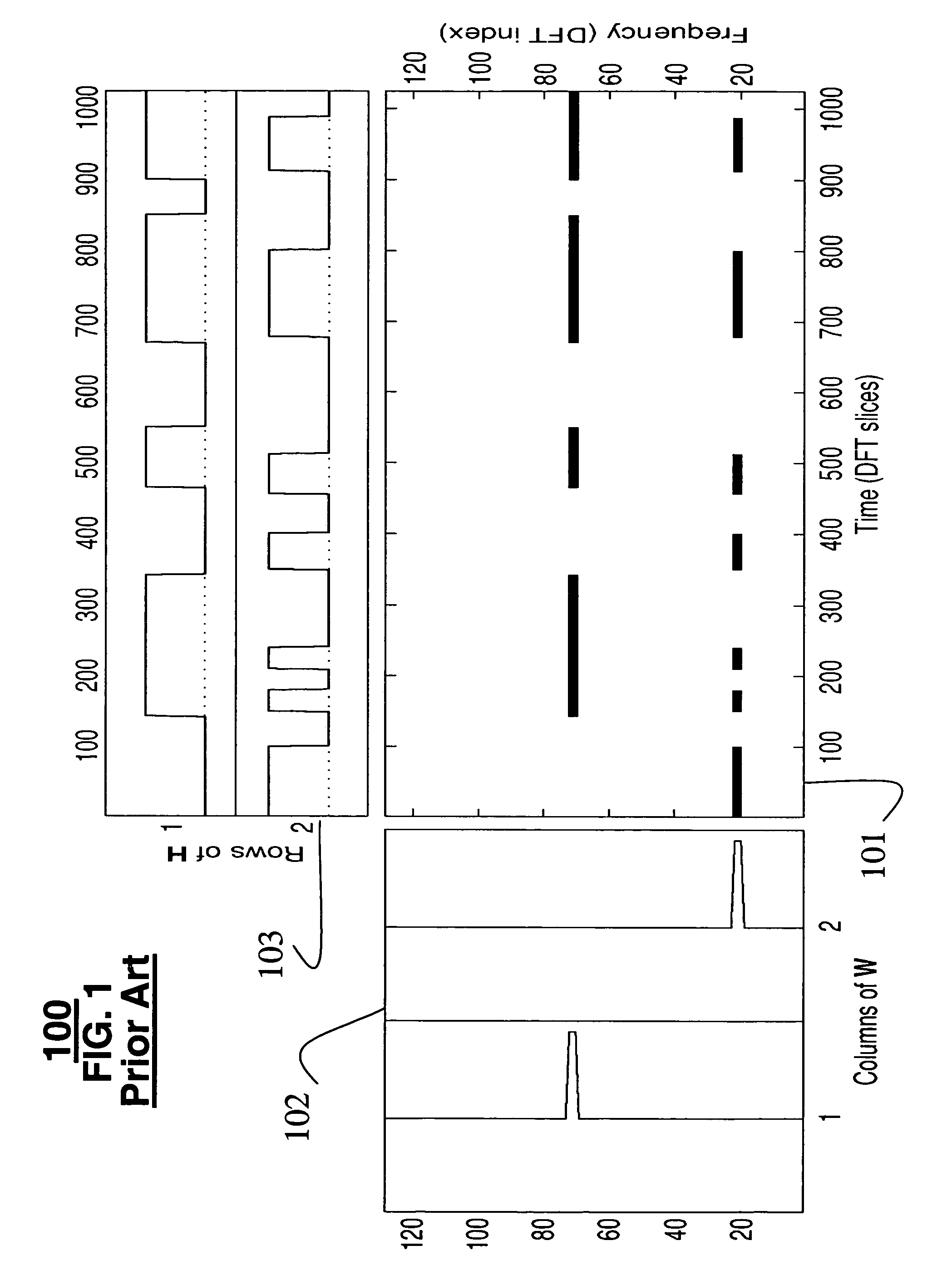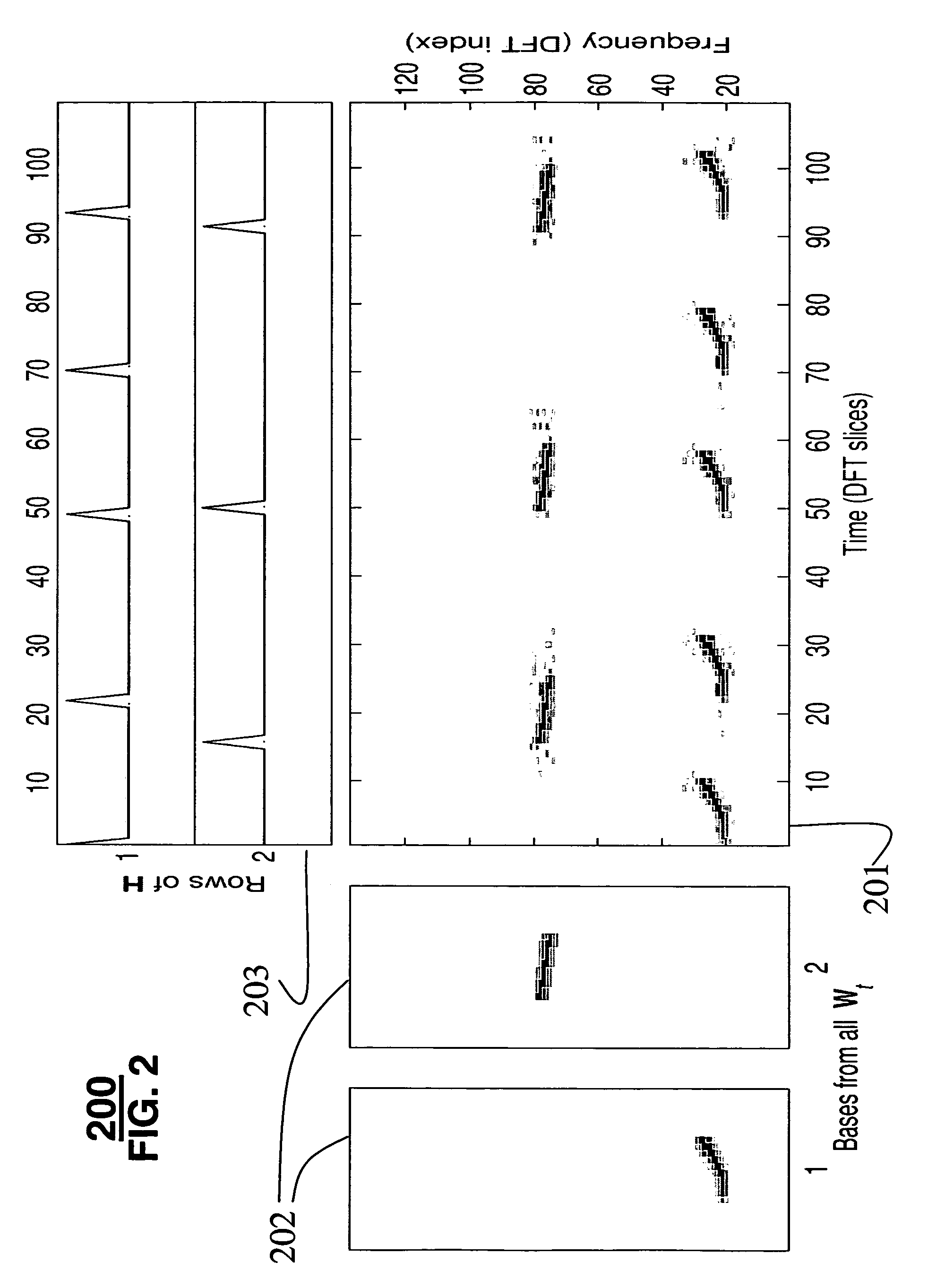System for separating multiple sound sources from monophonic input with non-negative matrix factor deconvolution
a multi-source sound source and monophonic input technology, applied in the field of signal processing, can solve the problems of system restricted within the spatial confines of a single image, and discarding temporal information
- Summary
- Abstract
- Description
- Claims
- Application Information
AI Technical Summary
Benefits of technology
Problems solved by technology
Method used
Image
Examples
Embodiment Construction
[0033]Non-Negative Matrix Factor Deconvolution
[0034]The invention provides a method and system that uses a non-negative matrix factor deconvolution (NMFD). Here, deconvolving means ‘unrolling’ a complex mixture of time series data streams into separate elements. The invention takes into account relative positions of each spectrum in a complex input signal from a single channel. This way multiple signal sources of time series data streams can be separated from a single input channel.
[0035]In the prior art, the model used is V=W·H. The invention extends this model to:
[0036]V≈∑t=0T-1Wt·Ht→,(4)
where an input matrix Vε≧0,M×N is decomposed to a set of non-negative bases matrices Wtε≧0,M×R and a non-negative weight matrix Hε≧0,M×N, over successive time intervals. The operator
[0037](.)t->
shifts the columns of the matrix H by i time increments to the right, for example
[0038]A=[12345678],A0→=[12345678],A1→=[01230567],A2→=[00120056],….(5)
[0039]The left most columns of the matrix H are approp...
PUM
 Login to View More
Login to View More Abstract
Description
Claims
Application Information
 Login to View More
Login to View More - R&D
- Intellectual Property
- Life Sciences
- Materials
- Tech Scout
- Unparalleled Data Quality
- Higher Quality Content
- 60% Fewer Hallucinations
Browse by: Latest US Patents, China's latest patents, Technical Efficacy Thesaurus, Application Domain, Technology Topic, Popular Technical Reports.
© 2025 PatSnap. All rights reserved.Legal|Privacy policy|Modern Slavery Act Transparency Statement|Sitemap|About US| Contact US: help@patsnap.com



